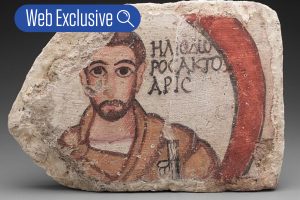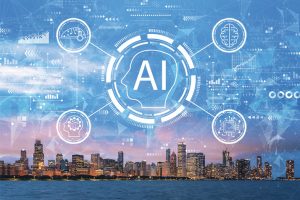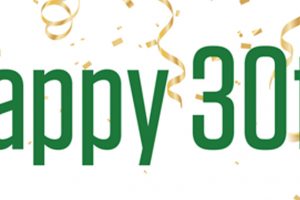Look to this micro-generation for tech-savvy, adaptable leadership
By Mike Santore and Robert Eaton
Scene from William McKinley High School circa 1992
You run into your high school library between classes late in the day to find and check out a few books for a research paper you have to type out using your word processor or typewriter. Overcome with the smell of the musty old library books, you search for the right drawer in the card catalog while running through the alphabet in your head (F, G, H, Hai, Haj, Hak, …, Halley); looking up, looking down, sidestepping down the aisle. Then frantically flipping through the cards looking for one of your books before the bell rings, Sir Edmund Halley’s An Estimate of the Degrees of the Mortality of Mankind. Finding it, you grab one of the torn pieces of scratch notebook paper in the bin on top of the card catalog, briefly forgetting the bell is about to ring and pausing for a moment to contemplate what was previously printed on the other side.
You are snapped back to reality by the sound of the bell. Knowing you still need to head back out to the far portables over near the football field without getting stopped along the way, you grab a small #2 pencil strewn out on the table nearby to write down the classification number: 519.82 HAL. You grab another realizing the first wasn’t sharpened and had an inordinate amount of teeth marks on it. You head down the aisles, racing past the computer lab filled with Apple IIe computers, where a few of your classmates are filing in after the bell to play Oregon Trail under some thinly veiled guise of its educational content.
With scratch paper in hand you do the mental math (518, 519, 519.7, 519.8, 519.82), scanning the rows and shelves. Disappointment sets in as you don’t see the book where it should be. You frantically rack your brain for a backup plan; look for another author on tables of births and funerals? Choose a different research topic, maybe something with Frank’s Copula? Or just try to talk your parents into calling you in sick tomorrow (“Remembering that the key to faking out the parents is the clammy hands.”)? Then you’re elated to see the book sticking out slightly out-of-place in the same row but a few books over.
If any of this resonates with you, you might be part of the Oregon Trail Generation.
Back in 2015, Anna Garvey wrote a blog post for Social Media Week article titled “The Oregon Trail Generation: Life Before and After Mainstream Tech.”[1] She defined this micro-generation as being jammed smack-dab between Generation X and Millennials—those born between the mid- to late-’70s and the early to mid-’80s. As she astutely points out, those of the Oregon Trail Generation “came of age just as the very essence of communication was experiencing a seismic shift, and it’s given [them] a unique perspective that’s half analog old school and half digital new school.”
This was the first group to start primary or secondary education using card catalogs, to use volumes upon volumes of encyclopedias to do research, to use typewriters or word processors for writing essays, and to finish high school with the benefits of the internet, dial-up modems, and dot matrix printers. From this start, the Oregon Trail Generation is well positioned to appreciate both ways that other generations may not.
Many Kinds of People Made the Trip to Oregon
Students who grew up playing “Oregon Trail” were poised to be first adopters of more advanced technologies as they matriculated in high school and college. Their early introduction into the world of computers set them up for swift acceptance of classroom PCs and the programs (apps) that allowed them to be productive.
Some of these students became today’s actuaries. Actuaries raised before the Oregon Trail Generation were responsible for developing many technical actuarial models (you can ask them about APL and TAS), but the Oregon Trail Generation sat on the shoulders of giants and made great strides in orchestrating the models and capabilities we see in the cloud-based platforms of today. One key feature of an actuary of the Oregon Trail Generation is the ability to hold both the limits and possibilities of technical advancements in their minds at one time.
Some in the Oregon Trail Generation were inspired to pursue more computer-based studies (CS, electrical engineering) before becoming actuaries. These actuaries understand the fundamentals of computer communication, constructing databases, and the fundamentals of object-oriented programming. Others in the Oregon Trail Generation studied economics or mathematics at university and hold a greater appreciation for calculating integrals by hand—the only method available before the internet or before symbolic manipulation took over handheld graphing calculators.
However they arrived here, those in the actuarial profession who today are 35 to 45 (we broaden the range given by Garvey) are generally tech-savvy, and they got there by designing models like those we use today.
How Many Yoke Do You Want?
Many actuaries from the Oregon Trail Generation have an innate understanding of the underpinnings of today’s technology. They may have worked in a Lotus 1-2-3 spreadsheet or coaxed results from their calculators using reverse Polish notation. This early and insider knowledge creates a tech-halo that shines through to today’s mobile- and app-raised actuarial analysts. The Oregon Trail Generation uses this trust and respect as they manage the next cohort of actuaries, who are the primary on-the-ground modelers of today’s insurance sector risks, profits, and losses.
Similarly, the Oregon Trail Generation is partly responsible for building early generations of the current complex and efficient, distributed models that took the life insurance valuation runs from a 20-hour marathon on the company’s fastest PC to a 20-minute sprint across a few thousand nodes in the cloud. This feat of architecture and design earned the Oregon Trail Generation the plaudits and respect of senior management and the C-suite. The Oregon Trail Generation has leveraged that accomplishment to reach key management positions in many insurance companies across the globe.
The Trail Divides Here
The path forward is less certain for actuaries than it has been in recent years. The Society of Actuaries (SOA) has diagnosed a more contentious environment for actuaries,[2] including the need to “respond to environmental changes driven by [artificial intelligence (AI)], data science, the changing nature of work, and the changing nature of insurance.”
To address certain environmental trends such as the rise of data science and the transformation of professional work by AI and automation, the SOA has embarked on a Long-Term Growth Strategy (LTGS). This LTGS aims to position actuaries for strong professional development and to ride atop the future wave of smart machines that will make predictions that were long the purview of actuaries.
David Driscoll echoes these sentiments in his insightful Contingencies article “Is ‘Data Science’ an Existential Threat for Actuaries?”[3] He ponders the same headwinds of advanced technology, these new data scientists, and their potential threat to the actuarial profession. Driscoll observes that “the emergence .. of data science … is good news for actuaries,” and concludes:
“What actuaries can take away from the example of data scientists is that the growth and long-term viability of our profession depend on our ability to break away from applying formulaic approaches to familiar tasks and develop solutions based on statistical principles to problems that actuaries of earlier eras could not even imagine.”
We share Driscoll’s optimism about our profession. We emphasize this point with the knowledge that the Oregon Trail Generation—with high “adaptability quotients” (AQ) built in to its DNA from years of needing to learn new technologies first—will be quick to ride the waves of the next machine innovations.
Severe Thunderstorm: Lose One Day
Those in the Oregon Trail Generation can stand to learn a few more tricks—in particular they risk resting on their technological laurels, mistakenly believing that they know what they need to know to get by. They don’t—or they won’t for long. Predictive analytics is a field that came into its own as the Oregon Trail Generation was entering or leaving college. This nascent technology rides on the ability of fast machines to handle big data, concepts that were never covered in the Oregon Trail Generation’s actuarial exams or university coursework, and only recently emerged on the Associate of the Society of Actuaries (ASA) syllabus.
To become great managers, the Oregon Trail Generation must appreciate and learn the new skills and concepts that today’s actuarial students grasp in their preliminary tests.
You’ve Reached Oregon
The actuaries of the Oregon Trail Generation have contributed greatly to the advancements in complex modeling and thought that have kept our profession at the height of financial risk management. There is a challenging road ahead for the profession as environmental and market forces shift the ways we think about the role of the actuary. Fortunately for many of us, we began forging our electronic path early, with a few hundred dollars in our virtual pockets to spend at Matt’s General Store in Independence, Missouri.
MIKE SANTORE, MAAA, FSA, is a vice president at Nassau Financial Group.
ROBERT EATON, MAAA, FSA, is a principal and consulting actuary at Milliman.
END NOTES
1 “The Oregon Trail Generation: Life Before and After Mainstream Tech,” Social Media Week; April 21, 2015. Accessed January 25, 2022 from https://socialmediaweek.org/blog/2015/04/oregon-trail-generation/.
2 https://www.soa.org/programs/strategic-planning/soa-initiatives/
3 “Is ‘Data Science’ an Existential Threat for Actuaries?,” Contingencies;
January/February 2020.




